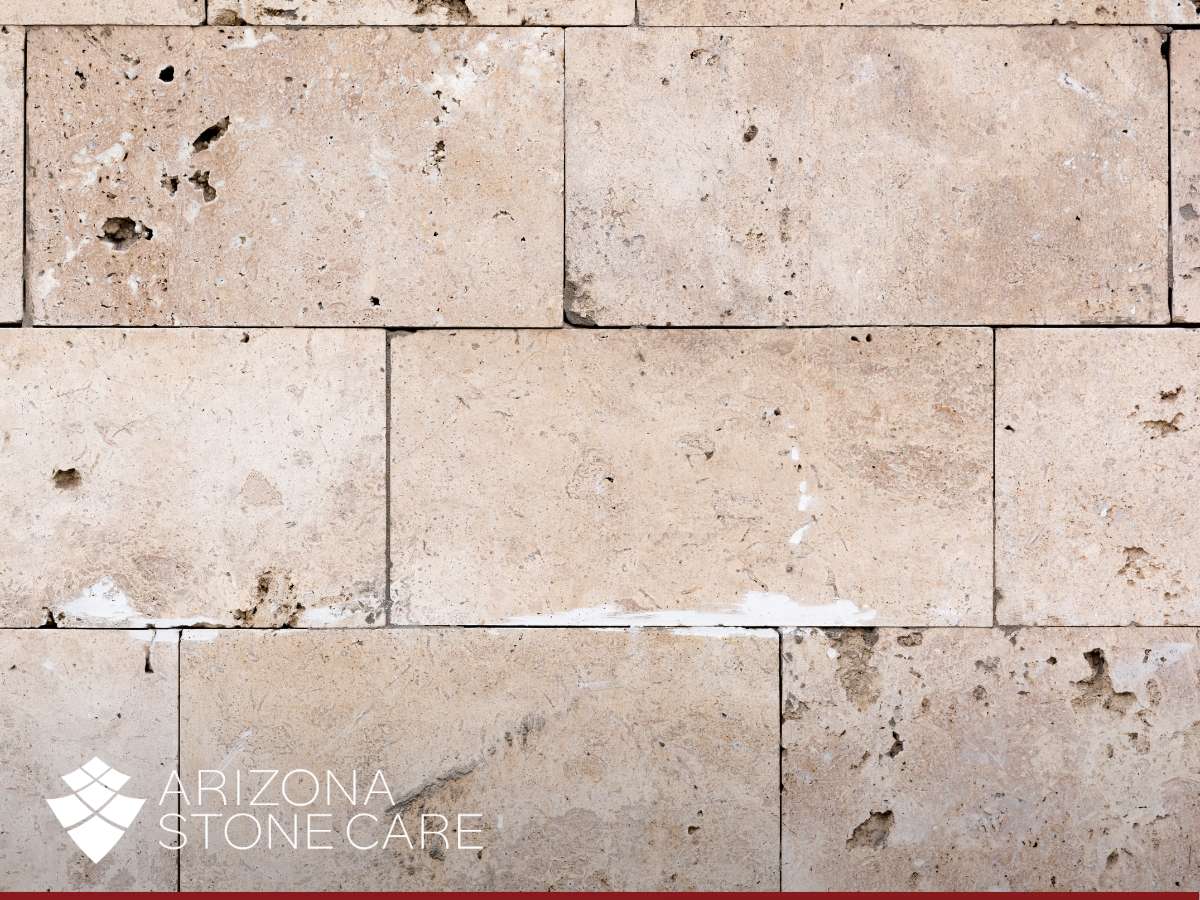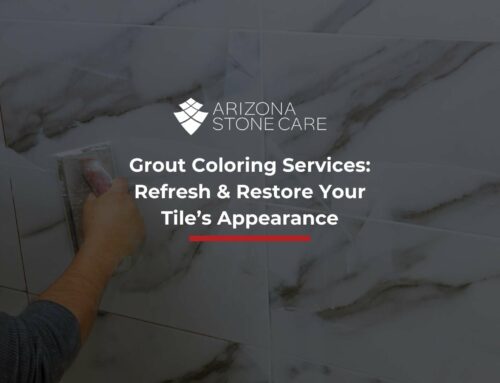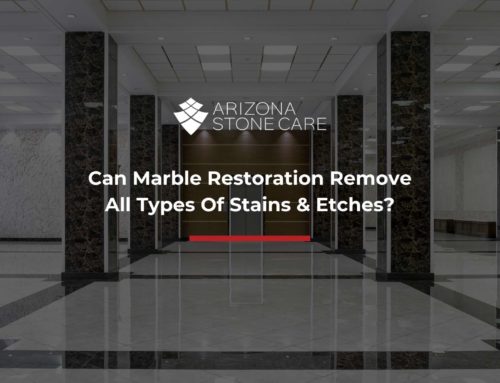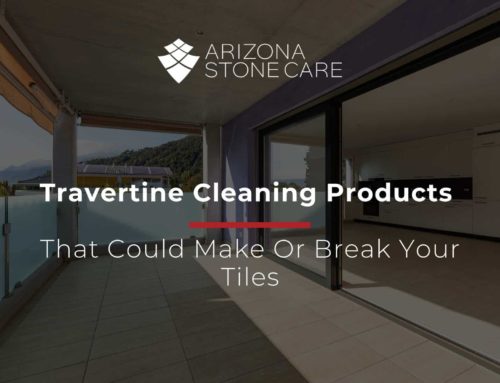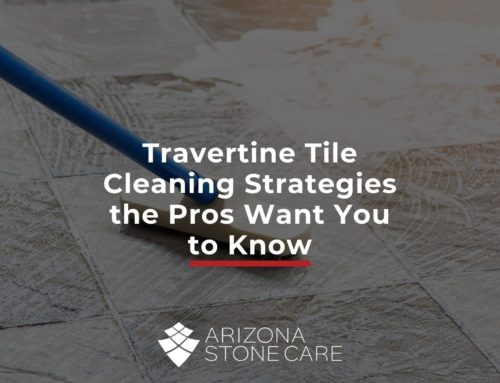Travertine Maintenance & Polishing: Everything You Need To Know
Essential Steps For Travertine Care & Restoration To Keep Its Charm & Durability
Travertine is a natural stone known for its durability and distinctive appearance. Its color variations and natural veining make it a popular choice for floors, countertops, and outdoor areas. However, like any natural stone, travertine requires proper care and maintenance to preserve its charm and functionality. Whether you’re looking to restore its original shine or simply maintain its appearance, understanding the key steps in travertine maintenance and polishing is essential.
In this guide, we’ll cover all the essentials for maintaining and polishing your travertine, highlighting the significance of professional care and offering tips to keep your stone in top condition. We’ll also explore how natural stone restoration can restore the shine of your travertine surfaces, giving them a fresh, like-new appearance.
The Nature Of Travertine: Beauty & Care
Formed from mineral deposits around hot springs or limestone caves, travertine is a natural stone with unique veining and a porous surface. This distinctive composition makes it a popular choice for various applications. However, it also makes travertine prone to damage if not properly cared for.
The porous nature of travertine makes it susceptible to staining, etching, and scratching, especially when exposed to acidic substances or harsh cleaners. To keep your travertine in top shape, it’s crucial to understand the importance of cleaning and restoration.
Common Causes Of Damage To Travertine
Over time, the following factors can contribute to the wear and tear of your travertine surfaces:
- Foot Traffic: Everyday movement across the floor can lead to scratches, scuffs, and general wear, especially in high-traffic areas.
- Spills and Stains: As a porous stone, travertine can absorb liquids like coffee, wine, and juice, leaving behind stains or etch marks.
- Harsh Cleaners: Acidic or abrasive cleaners can break down the stone’s surface, dulling its appearance and leaving it prone to further damage.
- Grime Buildup: In areas with pitted travertine, dirt and grime can accumulate in the small crevices, making cleaning more difficult and reducing the stone’s overall shine.
Why Polishing Travertine Is Necessary
Regular polishing smooths imperfections, removes surface scratches, and enhances the overall look of the stone. Additionally, polishing helps maintain a clean, hygienic surface by reducing the small crevices where bacteria and grime can build up.
By using proper natural stone cleaners, you can protect your travertine from dirt and staining, preserving its beauty and functionality for longer periods. Read on to learn why this process is important:
1. Restores The Shine
Travertine can lose its natural luster over time due to foot traffic and wear. Polishing restores the stone’s shine, giving it a fresh, vibrant appearance. This is especially noticeable in high-traffic areas, such as kitchens and hallways, where the stone is prone to losing its gleam.
2. Smooths Out Imperfections
Over time, travertine surfaces can develop scratches, cracks, or pits. Polishing helps smooth out these imperfections, making the stone appear more even and polished. This process not only improves the look but also prevents minor damage from worsening over time.
3. Improves Durability
Regular polishing helps to strengthen travertine by creating a protective layer on the surface. This reduces the chances of the stone absorbing dirt, liquids, or stains, ultimately increasing its durability and lifespan. Polished travertine is more resistant to everyday wear and tear, ensuring your surfaces remain in top condition.
4. Makes Cleaning Easier
Polished travertine surfaces are smoother, making them easier to clean. Polishing minimizes pores and crevices where dirt and grime accumulate, making surfaces easier to clean. As a result, your cleaning routine becomes more efficient, and your stone stays looking its best with less effort.
5. Enhances Color & Depth
Travertine has beautiful natural veining and color variations that can fade over time. Polishing brings out the depth and richness of the stone’s natural hues, making it look more vibrant and attractive. This enhances the overall aesthetic of your space and keeps your travertine looking stunning for years.
6. Prevents Stains
As a porous material, travertine is prone to absorbing liquids and staining. Polishing helps close some of the small pores on the surface, making the stone more resistant to stains and easier to maintain. Regular polishing can also help remove trapped grime, keeping your surfaces cleaner.
The Process Of Travertine Polishing
To ensure the best results, professional travertine polishing is recommended. Here’s a breakdown of what to expect when you hire an expert:
- Initial Inspection: The first step in the process involves a thorough inspection to identify any damage, including scratches, stains, or uneven areas on the surface.
- Deep Cleaning: Before polishing, the stone must be properly cleaned to remove dirt, grime, and any old sealers. This step is essential for ensuring the stone’s surface is ready for polishing. This is where natural stone cleaning plays a crucial role, ensuring that all contaminants are removed effectively.
- Grinding and Polishing: Using specialized diamond abrasives, professionals will smooth out the surface, addressing any scratches or imperfections. This step is key to achieving a flawless, high-gloss finish.
- Sealing: After polishing, a high-quality sealer is applied to protect the stone from future stains and damage. Sealing also helps to maintain the stone’s appearance over time.
- Post-Polishing Care: A reputable company will provide post-polishing care instructions, including cleaning and maintenance tips to keep your travertine in top condition.
The Importance Of Professional Restoration
While DIY cleaning and maintenance can go a long way in preserving the look of your travertine, professional natural stone restoration offers a level of expertise that ensures optimal results. Not only will professionals have access to specialized equipment and products, but they will also be able to assess the stone’s condition and recommend tailored solutions.
A professional service will not only restore the shine but also address any deeper issues, such as etching or staining, which may not be easily fixed with regular cleaning.
Ongoing Maintenance For Travertine
Once your travertine has been polished and restored, it’s essential to keep up with regular maintenance to prolong its beauty. Here are a few tips to ensure your travertine remains in excellent condition:
- Regular Sweeping or Dust Mopping: Dust and debris can cause scratching if not removed regularly. Use a soft dust mop or broom to keep your floors free from dirt.
- Use pH-Neutral Cleaners: When cleaning your travertine tile, avoid acidic cleaners like vinegar, bleach, or ammonia, as they can damage the stone. Instead, opt for gentle, pH-neutral cleaners that are safe for natural stone.
- Tackle Spills Immediately: Since travertine is porous, spills should be cleaned up promptly to prevent staining. For stubborn stains, consider professional cleaning services.
- Place Mats in High-Traffic Areas: Rugs and mats can help protect your travertine from heavy foot traffic and reduce the risk of scratches.
Conclusion
Travertine is an investment in your home, business, and maintaining its beauty is crucial to preserving its value. Whether you need a professional polishing service, cleaning, or full restoration, regular care will keep your travertine looking stunning for years to come. For expert travertine tile cleaning, maintenance, and polishing, trust Arizona Stone Care to get the job done right.
Ready to bring the shine back to your travertine surfaces? Contact us today for a consultation and let us help you restore the elegance of your stone floors, countertops, and more!
Arizona Stone Care
Email: [email protected]
Website: www.arizonastonecare.com
Mesa Location
505 W 8th Ave #17
Mesa, AZ 85210
Office: 480-232-6264
Scottsdale Location
6908 E Thomas, Suite #202-1,
Scottsdale, AZ 85251
Office: 602-932-0011
Chandler Location
2101 N Evergreen, unit 1031
Chandler, AZ 85225
Office: 480-531-6796

